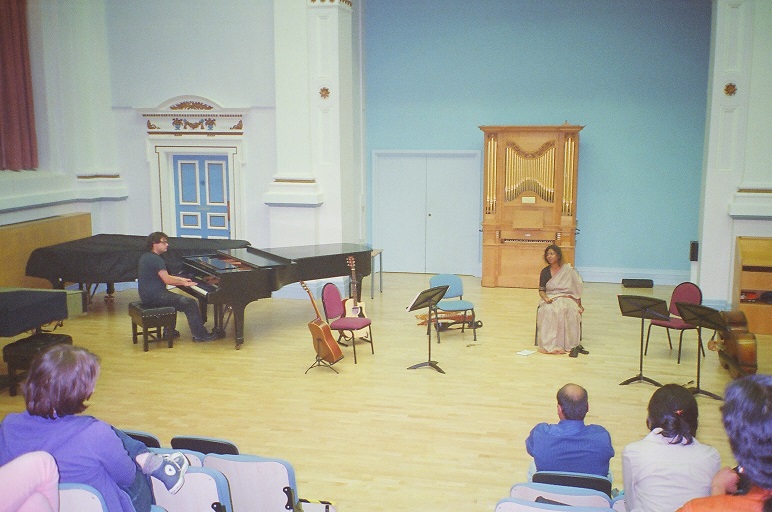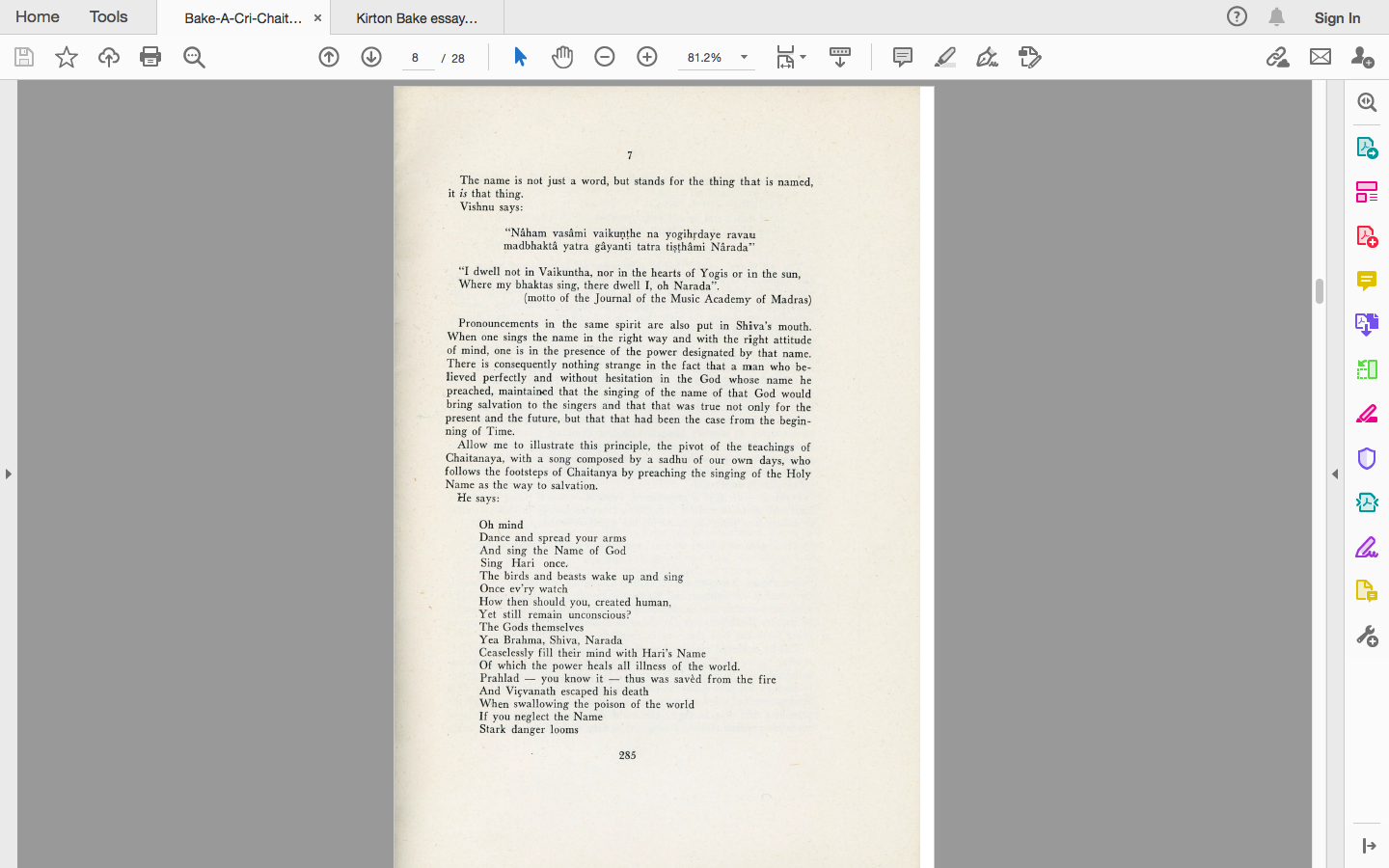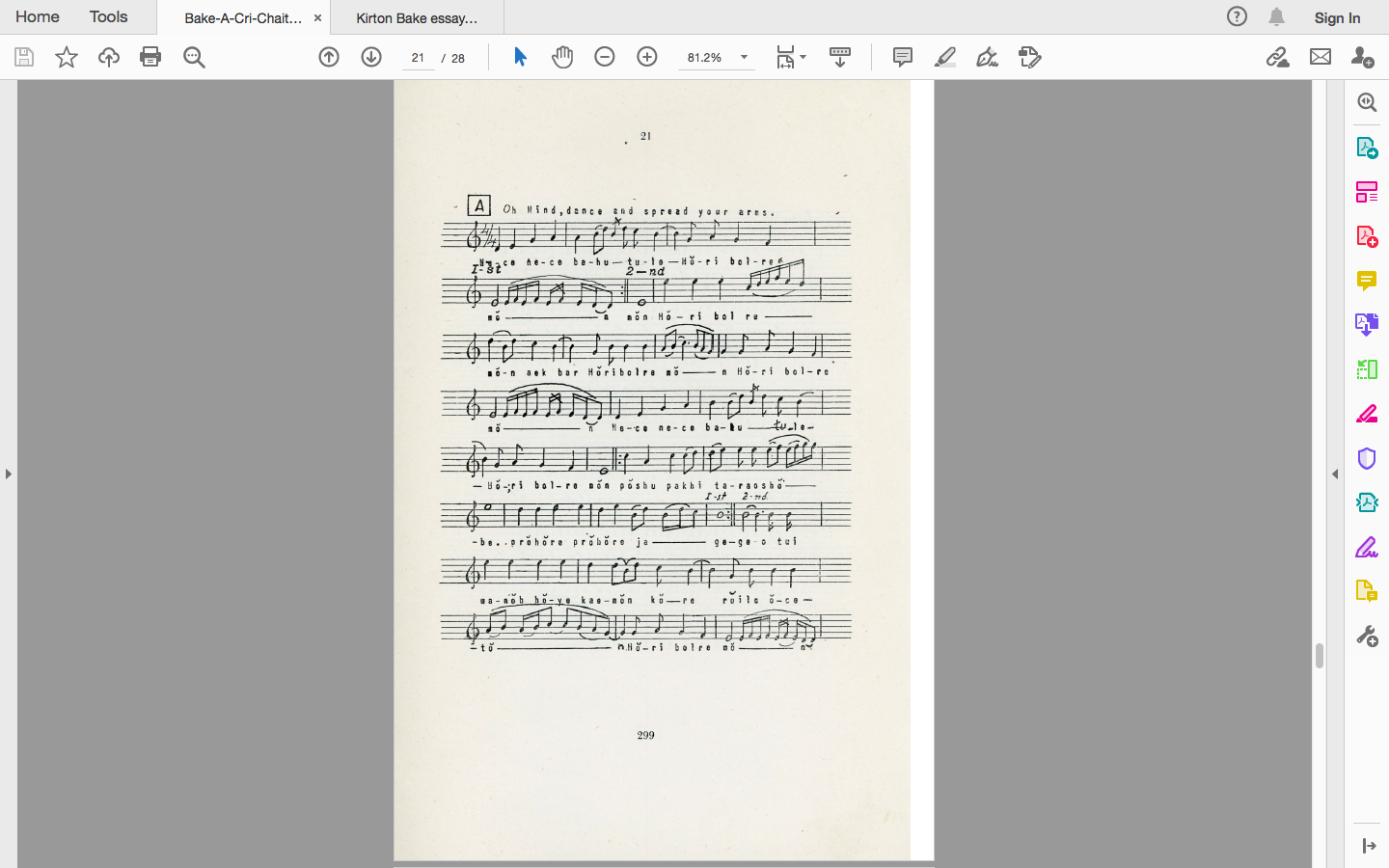
Olly Weeks Reads Bake’s Kirtan Notation
Oliver Weeks is a British composer and multi-instrumentalist with whom I have been collaborating since 2002. We had a band called Parapar, between Kolkata and London, and even now we continue to make music together. I have learned so much from Olly and consult him on various—mainly Western classical music related—issues.

This is an old image, of Olly and me performing at Leeds University in 2010. Our other band members were also present, but I wanted to use an image of Olly at the piano.
In 2015, I had worked at the Arnold Bake archives at the School of Oriental and African Studies (SOAS) and found in his files some handwritten notation of kirtan from the 1940s, when Bake was taking lessons from his teacher in Calcutta (I write Calcutta, not Kolkata, as that is how the city was called at the time), Navadvip Brojobashi (1863-1951). (I am using the spelling on Bake’s list of wax cylinders at both the British Library and Berlin Phonogramm-Archiv, although the name is spelt Nabadwip Brajabashi by historian Bob van der Linden in his biography of Arnold Bake and Nabadwipchandra Brajabashi by the scholar of kirtan Eben Graves. Earlier, in 1932, Bake had recorded Brojobashi on his wax cylinders (nos. 98-101, 110)—that is when they might have first met. As Bob van der Linden writes, ‘Arnold notated some kirtan songs as sung by the guru of Shashanka Chatterji, his Bengali teacher. He had met the guru before in Calcutta but only knew him as Sadhu Baba. From him, he learned nam kirtan or the singing of the holy name, a far more popular but unsophisticated singing style than that of lila kirtan, which he learned from Brajabashi. It is to lila kirtan, Arnold wrote, that “Bengal owes the best of her lyrical poems’ and it continued to be ‘an outlet to arefined and intricate, but most certainly very deep, religious feeling, not equalledin any other part of India”’, quoting Bake’s 1948 essay ‘Cri Chaitanya Mahaprabhu’. It is these notations which are kept at SOAS. I took photographs of the pages and gave them to Olly to find out what he made of them. Archival rules restrict me from putting my photographs of Bake’s papers in a public domain and in any case here I am trying to do something else.
In the published version of ‘Cri Chaitanya Mahaprabhu’ Bake he did present some of the notation and here are two pages from that essay.


The notation that Bake made was a translation of sound into sign, and here the sign is being sung again, transformed back to sound. Between all these listenings and interpretations, so much has happened. To me, for example, if I were to listen to Olly playing the nam kirtan notation in Sindhu Bhairavi, I would never think of kirtan. Rather they bring to my mind Tagore’s melodies.
Arnold Bake had sung kirtan for two hours at Vrindavan in 1945, supported by his teacher Brojobashi on the khol. Bob van der Linden writes about how he sang five to six songs, sitting ‘in a cross-legged position among the musicians in front of an audience of a few hundred Indians. He did not feel very secure and was especially scared that he would not be able to join in on time after the rest of the group had finished their reply to his verse. Even so, he thought that he made few mistakes because Brojobashi’s drumming had led him through it all. Two years later, he wrote to the former American Consul in Calcutta, Edward M. Groth, that the performance was ‘one of the most cherished memories’ of his life.’ Linden, Bob van der, Arnold Bake: A Life with South Asian Music. (London, New York: Routledge, 2019), p.83.
I wonder how Bake’s kirtan might have sounded. I have heard his recordings of Rabindrasangit on Pathe, made in 1930 and for his lecture-demonstrations in the 1950s, he has sung both Tagore and other songs that he learned during his days in Santiniketan. The familiarity with the language and the music is evident in the renditions; I hear both a closeness and a distance, an insider-outsider voice in those songs. Olly too has been working with Bengali music for many years and he too has an insider-outsider location in this music, although this material is far more unfamiliar to him than it was to Bake. The announcements of numbers that he makes at the start of the recording are the file numbers for my photos of the notations from the SOAS archives. Olly made these recordings at his home in London and sent to me.
- Manoharsai from Sumati Devi of Manipur
- Manipur Univisited
- In Search of Nabadwip Brojobashi
- Nirmalendu Mitra Thakur Explains Bake’s Kirtan Recordings, 2021
- Found Film: Janmashtami and Nandotsav in Mainadal, 1994
- Kirtaniya Seema Acharya Listens to Olly
- In Mongoldihi, November 2015
- The Niyomsheba Songs, October 2014
- First Time in Mainadal, August 2014
